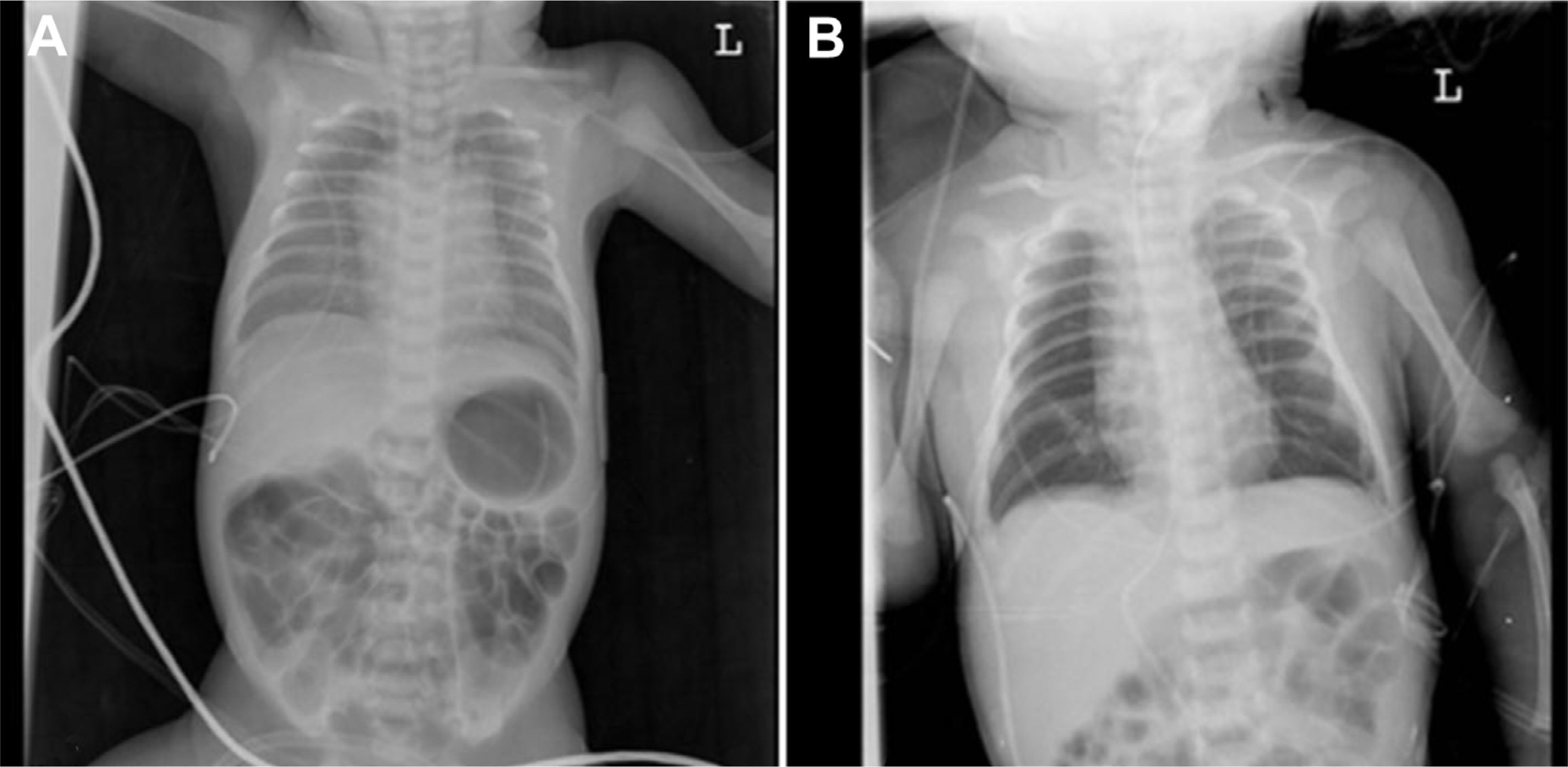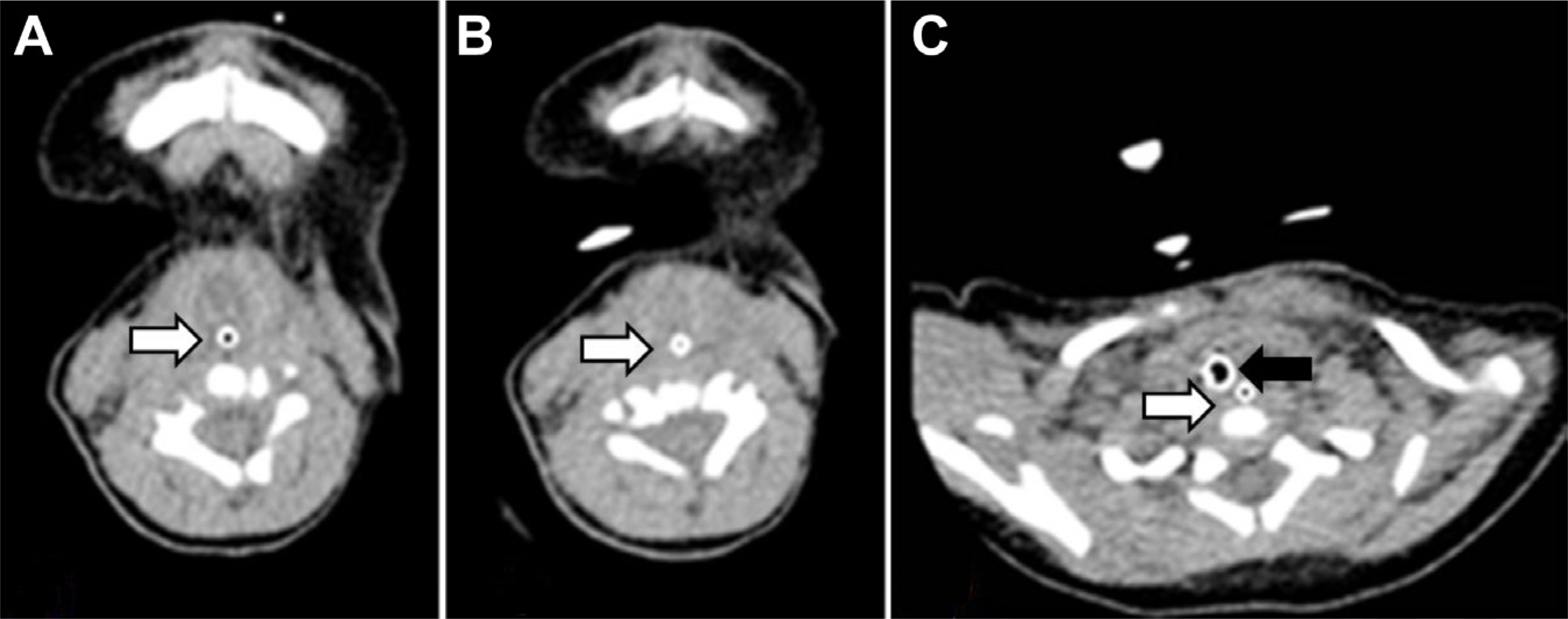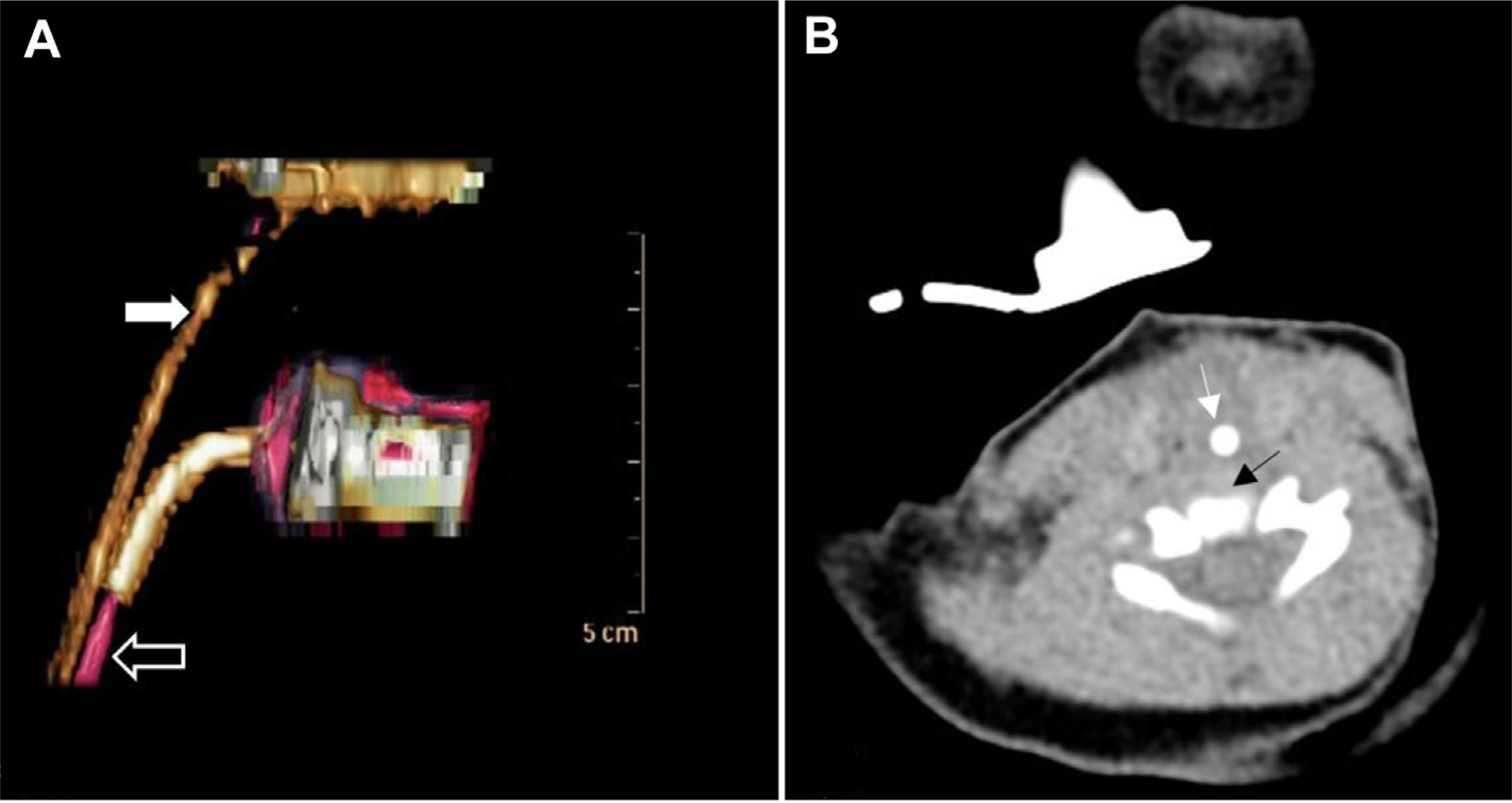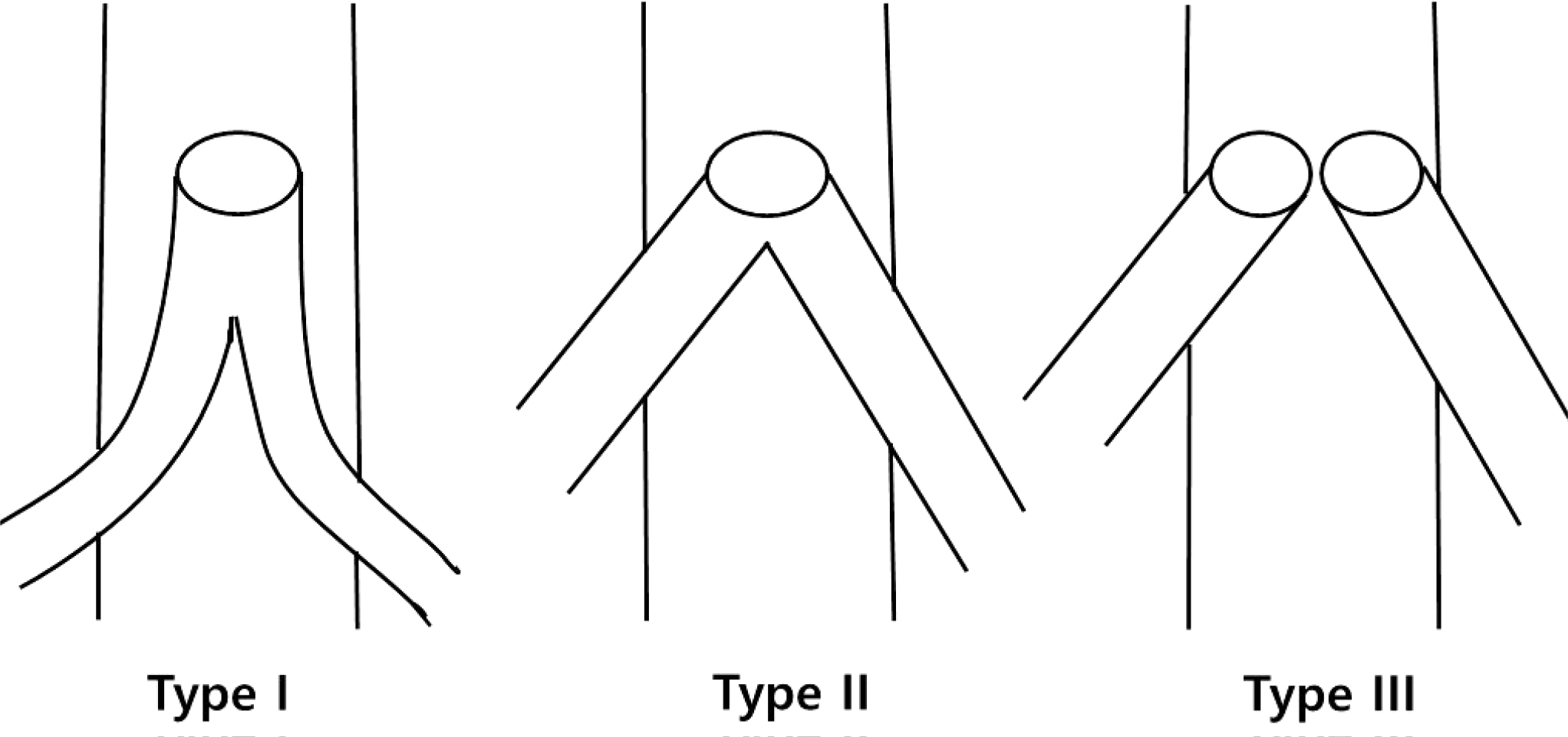Perinatology.
2018 Sep;29(3):142-146. 10.14734/PN.2018.29.3.142.
Successful Treatment of an Unexpected Neonatal Case of Tracheal Agenesis
- Affiliations
-
- 1Department of Pediatrics, Gyeongsang National University Changwon Hospital, Gyeongsang National University Colleage of Medicine, Changwon, Korea. aroma@gnu.ac.kr
- KMID: 2421581
- DOI: http://doi.org/10.14734/PN.2018.29.3.142
Abstract
- Tracheal agenesis is an extremely rare and typically fatal congenital anomaly, with only scattered case reports attesting to of its successful management. This condition usually presents with severe respiratory distress and aphonia after birth. Failed attempts at intubation make neonatal resuscitation difficult. This condition appears to be under-recognized, and there is a lack of consensus regarding the optimum approach for managing this lethal condition. We report herein a rare case of tracheal agenesis and describe our experience, following its successful treatment through surgical management.
Figure
Reference
-
1). Payne WA. Congenital absence of the trachea. Brooklyn Med J. 1900. 14:568.2). Lander TA., Schauer G., Bendel-Stenzel E., Sidman JD. Tracheal agenesis in newborns. Laryngoscope. 2004. 114:1633–6.
Article3). de Groot-van der Mooren MD., Haak MC., Lakeman P., Cohen-Overbeek TE., van der Voorn JP., Bretschneider JH, et al. Tracheal agenesis: approach towards this severe diagnosis. Case report and review of the literature. Eur J Pediatr. 2012. 171:425–31.
Article4). Jung YM., Kim JE., Son DW., Kim HN., Hwang HY. MDCT findings of tracheal agenesis: a case report. J Korean Soc Radiol. 2009. 60:23–6.
Article5). Park KM., Suh YL., Khang SK., Lee JG. Tracheal agenesis: report of an autopsy case. Korean J Pathol. 1992. 26:283–7.6). Sung IK., Chun CS., Cho SH., Kim SY., Kim SJ., Lee WB, et al. A case of tracheal agenesis with tracheoesophageal fistula. Korean J Perinatol. 1998. 9:320–4.7). Lee HJ., Park EA., Lee SJ., Kim MJ., Seong SH. An autopsy case of tracheal agenesis type 2. Korean J Pediatr Soc. 1996. 39:1759–62.8). Lee JY., Kim SY., Lee KY., Moon SH. Tracheal agenesis: a case report. Korean J Anesthesiol. 1998. 34:187–91.
Article9). Floyd J., Campbell DC Jr., Dominy DE. Agenesis of the trachea. Am Rev Respir Dis. 1962. 86:557–60.10). Fraser N., Stewart RJ., Grant J., Martin P. Gibbin KP, Padfield CJ. Tracheal agenesis with unique anatomy. J Pediatr Surg. 2005. 40:e7–10.11). Altman RP., Randolph JG., Shearin RB. Tracheal agenesis: recognition and management. J Pediatr Surg. 1972. 7:112–8.
Article12). Hedrick MH., Ferro MM., Filly RA., Flake AW., Harrison MR., Adzick NS. Congenital high airway obstruction syndrome (CHAOS): a potential for perinatal intervention. J Pediatr Surg. 1994. 29:271–4.
Article13). Evans JA., Greenberg CR., Erdile L. Tracheal agenesis revisited: analysis of associated anomalies. Am J Med Genet. 1999. 82:415–22.
Article14). Ergun S., Tewfik T., Daniel S. Tracheal agenesis: a rare but fatal congenital anomaly. Mcgill J Med. 2011. 13:10.15). Soh H., Kawahawa H., Imura K., Yagi M., Yoneda A., Kubota A, et al. Tracheal agenesis in a child who survived for 6 years. J Pediatr Surg. 1999. 34:1541–3.
Article16). Koltai PJ., Quiney R. Tracheal agenesis. Ann Otol Rhinol Laryngol. 1992. 101:560–6.
Article
- Full Text Links
- Actions
-
Cited
- CITED
-
- Close
- Share
- Similar articles
-
- Tracheal Agenesis Reconstruction with External Esophageal Stenting: Postoperative Results and Complications
- A Case of Tracheal Agenesis with Tracheoesphageal Fistula
- Unilateral Pulmonary Agenesis Associated with Tracheal Stenosis: A Case Report
- Tracheal Agenesis: A case report
- An Autopsy Case of Tracheal Agenesis Type 2





